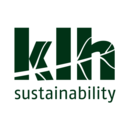Navigating beyond sustainability buzzwords
Contents |
[edit] Introduction
With the ever increasing attention on sustainability in construction, claims for sustainability crop up everywhere. Reading a statement on a manufacturer’s website about how ‘sustainable’ their product is, without any further information describing exactly in what way it is sustainable, can be immensely frustrating and cause one to lose faith in the quest to drive the implementation of sustainability in practice.
Whilst it certainly is not the case in all situations, these statements can be intentionally vague or overstated to highlight the environmental benefits of the product or company and may not represent reality. This practice is commonly referred to as “greenwashing”. This article presents a short guide for how to look beyond the buzzwords.
[edit] Understand what aspect of sustainability you are interested in
The broad and varied definitions of the term ‘sustainability’ and the many contexts in which it is used means that this has become a type of cover-all, blanket term addressing anything from environmentally superior to socially responsible. What particular aspect of sustainability concerns you in relation to the product or company you are investigating? It may be ethical and responsible sourcing of labour and materials, reducing embodied carbon, minimising waste generation or mitigating water consumption.
Knowing the specific areas that you are seeking information about will help focus your efforts in identifying the suitability, or otherwise, of the product or company.
[edit] Look for robust examples or evidence
Vague statements about a particular product’s sustainability should wave warning flags. Unfortunately, this is all too common, as found in a recent search: “PVC piping is one of the world’s most sustainable products". Look for examples or evidence to back up what is being said and to clarify the circumstances under which this claim is made:
- Why is the product sustainable?
- If it claims to have low embodied carbon, what is that compared to? Is it responsibly sourced?
- Are there very particular circumstances under which the product’s use can be considered sustainable, but standard practice negates this benefit? For example, plasterboard is 100% recyclable and suitable for closed loop production, but manufacturer take-back schemes, while important to take advantage of, are not always used. Nonetheless, the availability of these schemes shouldn’t remove the emphasis on designing out plasterboard waste as much as possible.
[edit] Look for independently verified information to back up claims
Certification from independent and reputable organisations gives credibility to company sustainability statements. For example, if a company claims to be environmentally responsible, are they ISO 14001 accredited, or better? Further examples of independent verification include BES 6001 Responsible Sourcing Certification, commitments to Science Based Targets and so forth.
A quick word of caution on Environmental Product Declarations (EPD): just because a product has an EPD, doesn’t necessarily make it better or more sustainable than another product: it just means that its impacts have been quantified and verified. EPDs are still beneficial and could justify statements regarding low carbon, low whole-life impact or recyclability, but they need to be reviewed in detail to determine how sustainable the product is.
[edit] Be aware of a singular focus
A singular focus on exemplar performance in a particular sustainable attribute without acknowledging the broader context should be investigated further. Look for evidence of a holistic approach to sustainability, considering both environmental and social impacts across the full life-cycle. For example, a material may be low embodied carbon, but have toxic chemicals that are harmful to humans and contribute to poor indoor air quality, or it may have high risks of child labour in the supply chain.
A product may note a high recycled content, without clarifying that the recycled feedstock has to be transported over significant distances to source the required quantities. Be wary of justifying or looking purely at a single aspect without considering the broader impacts.
Not everything mentioned here will be applicable in every situation, and much like sustainability itself, the context of the project can have a significant influence on what company or product is most suitable.
[edit] Related articles on Designing Buildings Wiki
- Attestation of conformity.
- British Board of Agrément.
- CE marking.
- Chain of custody.
- Construction Products Regulation.
- Embodied energy.
- End of life potential.
- Energy related products regulations.
- Environmental Impact Assessment.
- Environmental legislation.
- Environmental plan.
- Environmental product declaration.
- Kitemark.
- Life cycle assessment.
- Recyclable construction materials.
- Site waste management plan.
- Sustainability.
- Sustainable materials.
- Sustainable procurement.
- What to expect of sustainability professionals.
- Whole life costs.
Featured articles and news
CIOB Construction Manager of the Year 2025
Just one of the winners at the CIOB Awards 2025.
Call for independent National Grenfell oversight mechanism
MHCLG share findings of Building Safety Inquiry in letter to Secretary of State and Minister for Building Safety.
The Architectural Technology Awards
AT Awards now open for this the sixth decade of CIAT.
50th Golden anniversary ECA Edmundson awards
Deadline for submissions Friday 30 May 2025.
The benefits of precast, off-site foundation systems
Top ten benefits of this notable innovation.
Encouraging individuals to take action saving water at home, work, and in their communities.
Takes a community to support mental health and wellbeing
The why of becoming a Mental Health Instructor explained.
Mental health awareness week 13-18 May
The theme is communities, they can provide a sense of belonging, safety, support in hard times, and a sense purpose.
Mental health support on the rise but workers still struggling
CIOB Understanding Mental Health in the Built Environment 2025 shows.
Design and construction material libraries
Material, sample, product or detail libraries a key component of any architectural design practice.
Construction Products Reform Green Paper and Consultation
Still time to respond as consultation closes on 21 May 2025.
Resilient façade systems for smog reduction in Shanghai
A technical approach using computer simulation and analysis of solar radiation, wind patterns, and ventilation.
Digital technology, transformation and cybersecurity
Supporting SMEs through Digitalisation in Construction.
Villa Wolf in Gubin, history and reconstruction. Book review.
Construction contract awards down one billion pounds
Decline over the past two months compared to the same period last year, follows the positive start to the year.
Editor's broadbrush view on forms of electrical heating in context.
The pace of heating change; BSRIA market intelligence
Electric Dreams, Boiler Realities.
New President of ECA announced
Ruth Devine MBE becomes the 112th President of the Electrical Contractors Association.

























